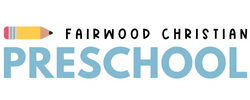Objective for the Emergent and Beginning Reading
Teaching children to enjoy being read to. Staff will involve them in shared reading, word
recognition, memorization and recognition of oral language patterns, even though they
may not yet be able to connect them to print. Children should learn and know most letters
and some book sense, left to right, front to back, right side up. Beginning to make the
connection between oral language and written material and read own writing. Pretend
read and retell familiar literature. Read some words, use memory and pictures to gain
meaning from material.
Reading Skills for the Emergent and Beginning Reader
- Interested in words.
- Recognizes own name in print.
- Knows names of letters.
- Knows names of numbers through fifty.
- Can match upper case letters to lower case letters.
- Speaks vocabulary adequately to convey ideas.
- Associates pictures with words and identifies new words by pictured clues.
- Hears rhyming words.
- Can reproduce two and three syllable words.
- Uses picture clues. Uses new words.
- Observes likeness and differences in words and letters.
- Shows left to right eye movement.
- Likes to be read to and wants to learn to read.
- Attention span is sufficiently long.
- Remembers the following from stories that are read aloud: names of characters, main idea
- and conclusion. Can keep events in proper sequence.
- Uses complete sentences. Knows sentences begin at left.
- Can work independently for short periods.
- Is able to make up simple endings to a story.
Objective for Emergent and Beginning Writing
Teaching children that drawing conveys message. Children learn to copy letters, words,
or sentences from the environment. Begin to use familiar letters and words as labels and
write some familiar words from memory. Write with guidance, beginning to use spacing
to define word boundaries, may use beginning, middle and ending letters to represent
words.
Writing Skills
- Holds pencil properly.
- Writes own name.
- Writes the numbers one through twenty.
- Writes upper and lower case letters.
- Copies simple words, phrases and sentences.
- Can write five familiar words from memory.
Objective for Math and Science
For children to begin to understand simple math concepts, enjoy the challenge of problem
solving, and gain an appreciation for the world around them. Begins to understand the
basic laws of nature.
Math and Science Skills
- Is able to count to one hundred.
- Is able to count backwards from twenty.
- Recognize numbers through fifty.
- Recites the days of the week.
- Recites the months of the year.
- Recognize the following shapes, circle, square, triangle, star, rectangle, oval, diamond.
- Recognize colors.
- Become familiar with textures using these mediums, paint, finger paint, glue, paste, play
- dough, shaving cream, buttons, beans, rice, popcorn, corn meal, dirt, sand, and water.
- Recognizes sizes, big, little, tall, short.
- Sorting by size and color, introduction into patterning.
- Matches objects to numbers and to colors.
Objectives for Social Development
Providing parallel play and cooperative play for children. Teaching them to problem
solve using words with respect to others. Helping children to understand the importance
of rules and structure in a classroom setting.
Social Skills
- Learning to control own body.
- Learning to share and cooperate.
- Understanding the established rules and limits.
- Learning to take turns.
- Learning communication through language.
- Learning to control emotions.
- Learning respect for others and for self listening during group time.
- Learning to interact appropriately during group time.
- Learning Christian values such as kindness, honesty, obedience, fairness and forgiveness.
